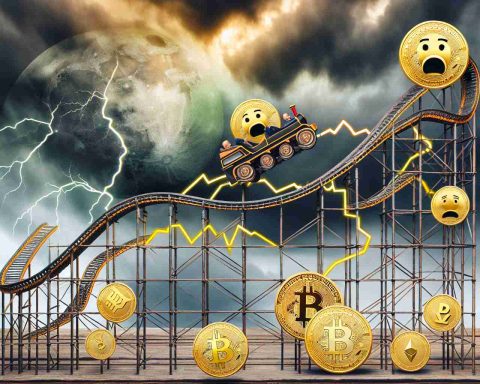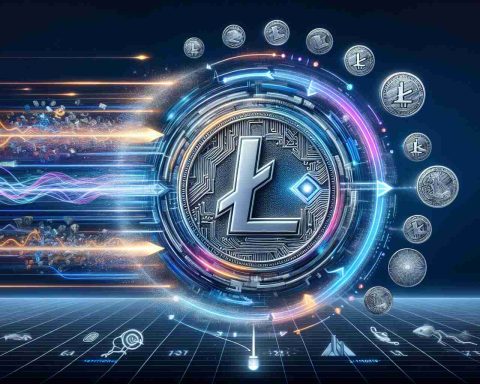The Controversy around XRP and Wealth Creation
Finance professional Rajat Soni (CFA) has struck a nerve in the cryptocurrency world with his recent satirical take on achieving riches through XRP. He humorously outlined a so-called “how-to” strategy that critiques the methods often used by market manipulators against unsuspecting investors, pointing specifically to XRP as an example.
Soni’s tongue-in-cheek guide proposes the idea of crafting a coin from nothing and controlling its entire supply, hinting at Ripple’s significant hold over XRP’s market. He suggests that by creating buzz around these tokens and marketing them aggressively, one could entice investors looking for quick profits.
In his remarks, Soni implies that selling a wild promise, like XRP soaring to $100K per coin, alongside adverse narratives against competitors like Bitcoin, could lead to false enthusiasm. Through his humor, he associates XRP with dubious schemes that could potentially harm less informed investors.
Additionally, his ongoing skepticism towards XRP highlights concerns regarding its centralized control and potential for manipulation, especially given that Ripple manages nearly half of XRP’s supply. While he extols Bitcoin’s decentralized attributes, supporters of XRP appear increasingly unfazed by Soni’s jabs, showing a notable lack of reaction to his criticism.
This ongoing discourse reveals the complex landscape of crypto opinions, especially around currencies like XRP.
The Broader Implications of Cryptocurrency Manipulation
The controversy surrounding XRP, as highlighted by Rajat Soni’s satirical critique, reflects broader challenges that cryptocurrencies pose to society and the global economy. Centralization in a market that prides itself on decentralization presents a paradox, potentially undermining trust in the very systems that blockchain technology seeks to improve. As speculative investments lead to volatile market behaviors, the potential for manipulation remains a significant concern, often resulting in the erosion of public confidence.
In societal terms, the criticism lodged against XRP underscores the need for better investor education. Many cryptocurrency enthusiasts are drawn to the promise of rapid wealth, often skipping crucial research. This can lead to disproportionate losses for less informed investors, while more savvy players benefit from speculative trading. As narratives around tokens evolve, the need for regulatory frameworks becomes more pressing, aiming to ensure a more balanced and fair market environment.
Moreover, the environmental effects of cryptocurrency mining and transactions cannot be ignored, especially as currencies engage in a race to capture market attention. For instance, Bitcoin’s considerable energy consumption has sparked debates about sustainability in the crypto space. Future trends may push for more environmentally friendly approaches, promoting technologies that minimize ecological footprints.
In the long term, the XRP saga serves as a cautionary tale about the delicate balance between innovation and regulation. As cryptocurrency continues to integrate into traditional financial systems, the implications of successful manipulation—or protection against it—will likely redefine investment landscapes and cultural perceptions of wealth creation in the digital age.
Unveiling the Hidden Risks and Opportunities in XRP Investment
Understanding the XRP Ecosystem
XRP, the native cryptocurrency of the Ripple network, has been subject to both praise and scrutiny since its inception. Created primarily for facilitating cross-border transactions, XRP boasts significant advantages in terms of speed and cost efficiency compared to traditional banking systems.
Pros and Cons of Investing in XRP
Pros:
1. Speed and Efficiency: Transactions using XRP are confirmed within seconds, making it an appealing option for financial institutions looking for quick transfers.
2. Low Transaction Costs: The cost of transactions using XRP is minimal, often just a fraction of a cent, which is attractive for large-volume transactions.
3. Real-World Use Cases: Ripple’s partnerships with various banks and financial institutions demonstrate its practicality in real-world applications.
Cons:
1. Centralization: Critics argue that XRP is not truly decentralized, as Ripple Labs controls a significant portion of the currency’s supply, raising concerns about market manipulation.
2. Regulatory Scrutiny: XRP has faced legal challenges, most notably from the U.S. Securities and Exchange Commission (SEC), which raises questions about its future viability.
3. Market Sentiment: Speculation and market hype can lead to volatility, with potential for significant financial loss for uninformed investors.
Key Features of XRP
– Consensus Algorithm: Instead of a traditional proof-of-work model, XRP uses a consensus algorithm that allows for quicker transaction processing.
– Gateway System: Ripple’s network relies on gateways, which serve as mediators for transferring currency, further streamlining the transaction process.
– XRP Ledger: The technology that underpins XRP is designed to be scalable and secure, supporting a growing number of transactions.
Limitations of XRP
While XRP offers several benefits, it is essential to acknowledge its limitations:
– Dependency on Ripple: The heavy reliance on Ripple for market dynamics can jeopardize investor confidence.
– Regulatory Challenges: The outcome of ongoing legal battles could significantly impact XRP’s value and adoption.
– Lack of Diversification: Unlike Bitcoin, which is seen as a store of value, XRP’s use case is primarily focused on transactions, which could limit its appeal as a long-term investment.
Current Trends in the Market
Recent trends indicate a growing interest in cryptocurrencies that solve real-world problems, such as XRP. As financial technology continues to evolve, the demand for efficient payment systems may bolster XRP’s relevance. Moreover, collaborations between Ripple and major financial entities suggest that XRP might solidify its position within the traditional financial landscape.
Security Aspects
Investors should remain vigilant regarding security when trading XRP. Utilizing secure wallets and adhering to best practices in cryptocurrency storage can help mitigate the risk of hacks and theft. Additionally, users should be cautious of phishing attempts that could compromise their XRP holdings.
Sustainability Concerns
As cryptocurrencies face increasing scrutiny over their environmental impact, XRP positions itself as a lower-energy alternative compared to proof-of-work systems like Bitcoin. This could appeal to environmentally conscious investors looking for sustainable options in the crypto space.
Final Insights and Predictions
As the cryptocurrency market continues to mature, XRP’s journey will be closely watched. Its ability to navigate regulatory challenges and maintain partnerships with financial institutions will play a critical role in defining its future. While skepticism remains regarding its centralized nature, XRP could thrive if it manages to solidify its use case and secure investor confidence.
For more insights into the cryptocurrency landscape, visit CoinDesk.













